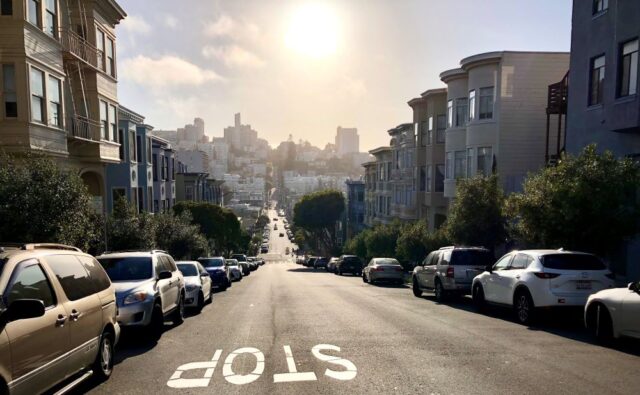In San Francisco, the three-month rolling median sale price for homes in April was $1,725,000, up nearly 10% year-over-year, according to Ted Andersen with the San Francisco Business Times. At the same time, the average San Francisco house sale in April went 12.4% over the original asking price — the highest percentage over asking since summer 2022.
The number of new listings coming on market in April also soared 30% year-over-year. And the number of home sales in April was up 22%, rising to its highest monthly count since mid-2022.
Sounds promising, but things are a bit uneven. Interest rates remain stubbornly high and confidence in the economy is slipping. Realtors insist that because of these two factors, properties need to be in near perfect condition to sell, and some agents are even pricing their listings below market value to attract multiple offers.
According to the Business Times report, the demand from buyers still outstrips the supply of homes at all price points. But ironically, it’s at the upper end of the market where buyers are most able to acquire properties. For homes in the $3 million to $5 million range, mortgage rates — which can be a barrier to some buyers — are simply not as important, because the very wealthy are able to make all-cash offers.
At other price points, higher mortgage rates have made purchasing a home difficult, if not impossible, for would-be buyers in San Francisco and across the nation. A Realtor.com housing report for April found that 68% of the 50 largest U.S. metro areas required a household income of more than $100,000 to afford the median-priced home at current interest rates.
In May, Zillow reported that families across the nation typically spent 24.2% of their income on mortgage payments in the first three months of this year. Because first-time buyers dealt with both higher home prices and higher mortgages, they typically spent 36.5% of their family income on mortgage payments.
The news isn’t much rosier for renters. According to a second Zillow report, also released in May, people in the U.S. typically pay just short of $2,000 a month in rent. To comfortably afford a rental at that price — meaning spending no more than 30% of their income — a renter would need to make nearly $80,000 a year. Five years ago, a renter would have needed to make less than $60,000 to comfortably afford the typical U.S. rental.
Since 2019, U.S. rents have grown 1.5 times faster than wages, according to an analysis by Zillow and StreetEasy that highlights the challenging financial landscape for today’s renters.
If homes seem more expensive than ever, it’s because they are — even after adjusting for inflation, according to a recent CNBC report.
To buy a home now in the U.S., homebuyers need to spend more than twice the amount spent in 1965. According to U.S. Census data, that year the median home price was $20,200 — in 2024 dollars, that works out to roughly $202,215. That is less than half of the $420,800 that a U.S. home costs today.
Here’s how much the median home value in the U.S. has changed between 1965 and 2024, with the first figure for each year adjusted for inflation, and the second figure the actual median price at the time:
1965: $202,215 ($20,200); 1985: $245,129 ($82,800); 2005: $380,793 ($232,500); 2024: $420,800 ($420,800)
In 1965, the median annual household income was $6,900, per U.S Census data. With homes selling for a median price of $20,200, a median earner would spend just under three times their income on a home.
In 2024, the median annual household income is estimated to be $78,171. That means that a typical homebuyer is spending 5.3 times their income on a home at today’s median price.
According to the CNBC report, the ramp up in home prices has been particularly stark since the onset of the COVID-19 pandemic, with prices increasing 30% since March 2020.
It’s perhaps not surprising then that the median age of first-time homebuyers has crept up in recent years to 35, according to data from the National Association of Realtors. In 2010, the median age of first-time buyers was 30.
Of course, the median cost of a San Francisco home is far greater than the median cost of a U.S. home, so the challenge of owning a home in the city is even more pronounced.
Comments: [email protected]





